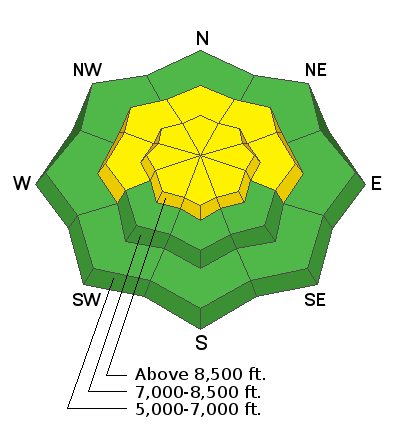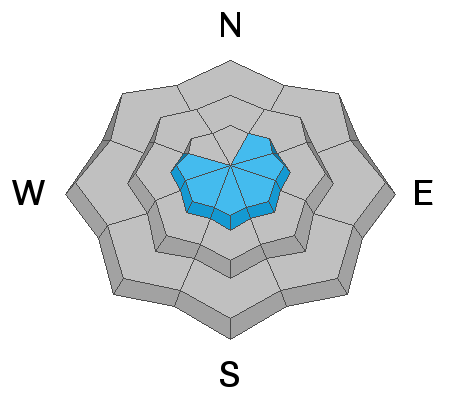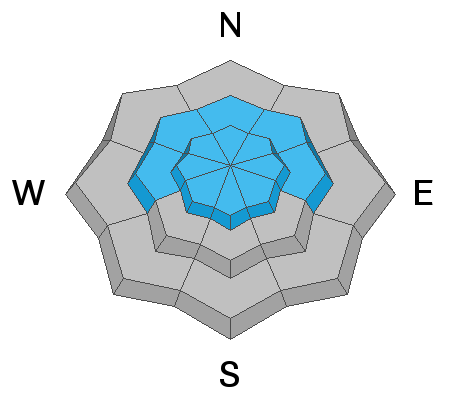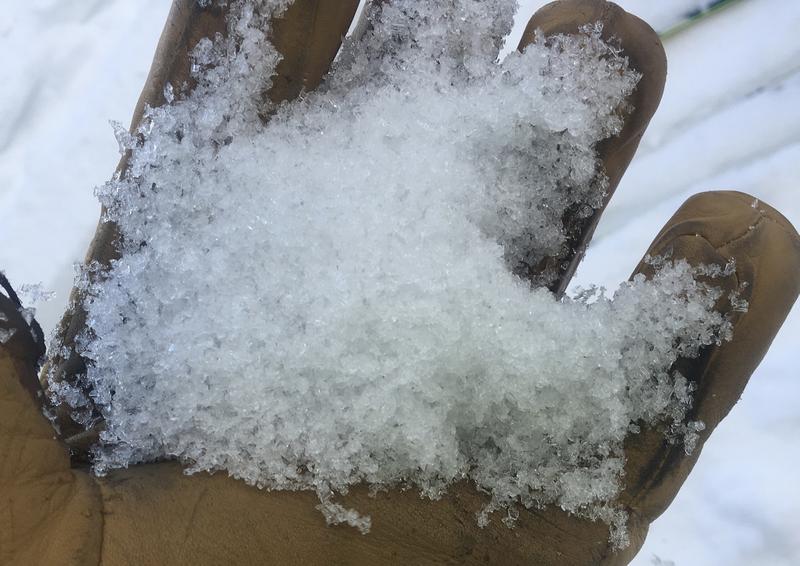Drifting from northwest winds created heightened conditions on some upper elevation slopes, and you might trigger avalanches consisting of wind drifted snow. Dangerous hard slab avalanches failing on a persistent weak layer are unlikely yet possible for people to trigger on drifted rocky slopes with shallow cover and poor snow structure. Stability has also improved on lower elevation slopes, where cold temperatures solidified rain-saturated snow. We've found nice snow and stable conditions in sheltered areas, on lower angled slopes, and at lower elevations.
The Tony Grove Snotel at 8400' reports 23º F this morning and there's 58" of total snow containing 90% of average SWE for the date. It's 14º F, at the 9700' CSI Logan Peak weather station, and northwest winds are currently averaging around 20 mph, with gusts to 47 mph.
A weak weather disturbance moving southeast out of western Canada will cross northeast Utah and southwest Wyoming this morning. A mostly dry and stable northwest flow aloft will follow through midweek. Today it may snow a bit then become mostly sunny in the mountains, high temperatures at 8500' around 23º F, and 15 to 20 mph north winds. Tonight will be mostly clear with low temperatures around 7º F, and 5 to 10 mph west-northwest wind. Tomorrow will be mostly sunny, with high temperature around 26º F, and 5 to 15 mph west-northwest wind, veering from the north in the afternoon.
It's been over a week since we've seen natural avalanche activity in the Logan Zone and no new avalanches were reported despite lots of traffic in the backcountry this weekend.
There were numerous close calls and lucky outcomes across Utah in January, including several in the Logan Zone. Sadly, we have two recent fatalities to report, both from the Manti La Sal National Forest.
-A snowmobile rider was killed Friday, 1/25/18, in the La Sal Mountains near Moab.... report
HERE-A backcountry skier was buried by an avalanche and killed near Fairview on 1/18/19. .. report is
HERE.
Here is footage of an explosive triggered avalanche in the La Sal Mountains. The avalanche was intentionally triggered to protect rescue and recovery operations on the site of Friday's fatality.











